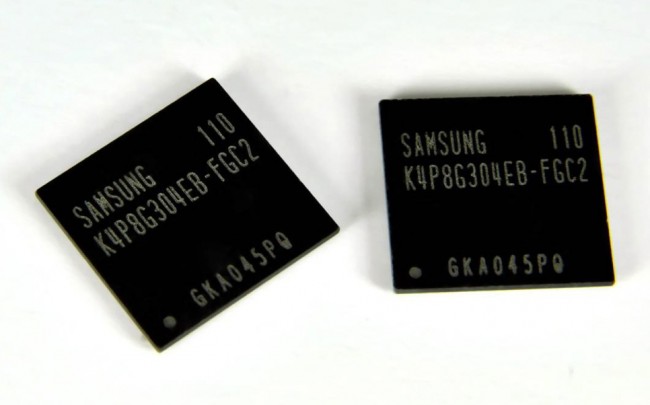Detailed in a recent press release from Samsung, the tech-giant has begun heavily producing their LPDDR2 memory for smart devices. With the mass production and roll out, Sammy hopes to have 2GB of RAM the norm in devices by the end of 2013. With the actual LPDD2, devices can remain thin and users wont have to fear of any extra power consumption thanks to the heavy research Samsung has put into the chip.
Yesterday, we mentioned that the Japanese version of the Galaxy SIII would sport 2G of RAM, instead of the normal 1GB smartphone owners are used to seeing. No word as to whether it is this exact chip in that variant, but let’s just cross our fingers that the US can get some 2GB RAM love too this year.
Samsung Now Producing Industry’s first Highest Density Mobile LPDDR2 Memory, Using 20nm-class Technology
SEOUL, Korea – May 17, 2012 – Samsung Electronics Co., Ltd., a global leader in advanced semiconductor technology solutions, announced today that it has begun producing the industry’s first four gigabit (Gb), low power double-data-rate 2 (LPDDR2) memory using 20 nanometer (nm) class* technology. The mobile DRAM (dynamic random access memory) chip, which went into mass production last month, will help the market to deliver advanced devices that are faster, lighter and provide longer battery life than today’s mobile devices.
“Samsung began expanding the market for 4Gb DRAM last year with the first mass-produced 30nm-class DRAM, and now we are working on capturing most of the advanced memory market with our new 20nm-class 4Gb DRAM,” said Wanhoon Hong, executive vice president, memory sales & marketing, Samsung Electronics. “In the second half of this year, we expect to strongly increase the portion of 20nm-class DRAM within our overall DRAM output to make the 4Gb DRAM line-up the mainstream product in DRAM production, and therefore keeping the leadership position in the premium market and strengthening the competitive edge.”
As large-screen tablets and smartphones equipped with quad-core CPUs lead rapid growth of the mobile market, there is greater demand for more energy-efficient and higher-capacity memory products that guarantee longer battery life, as well as faster processing speed.
Samsung’s 20nm-class 4Gb mobile DRAM represents the thinnest, highest-density, and highest-performance mobile memory, which enables ultra-slim mobile designs, as well as superior next-generation systems for both mobile manufacturers and enterprise solution providers.
Furthermore, based on the 4Gb components, Samsung can deliver 2-Gigabyte (GB) solutions that boast razor-thin thickness of 0.8 millimeters (mm) , which stack four 4Gb LPDDR2 chips in a single LPDDR2 package. This new package is approximately 20 percent thinner than 2GB packages that stack four 30nm-class 4Gb LPDDR2 chips. Also, the new 2GB package can process data at up to 1,066 megabits per second (Mbps), while spending the same amount of power as that of a previous 30nm-class 2GB package. Benefits of the new 20nm-class 4Gb LPDDR2 will help speed up the growth of the 4Gb DRAM market.
Samsung expects the newly introduced 20nm-class 4Gb LPDDR2 will rapidly replace 30nm-class 2Gb-based 1GB LPDDR2 that was in limited supply at the 0.8 mm thickness.
Production of 20nm-class 4Gb LPDDR2 ensures Samsung the widest range of mobile DRAM products in the industry. This follows the company’s previous achievement with 20nm-class DRAM, when it provided the industry’s first 20nm-class 8GB DDR3 modules for notebook PCs in March.
According to IHS iSuppli, shipments of 4Gb LPDDR2 will steadily increase, taking approximately 13 percent of total DRAM shipments in 2012, 49 percent in 2013 and 63 percent in 2014, with 4Gb DRAM becoming the mainstream chip in the DRAM market around the end of 2013.
.
For more information about Samsung Green memory, visit www.samsung.com/GreenMemory
Via: Engadget

Collapse Show Comments25 Comments